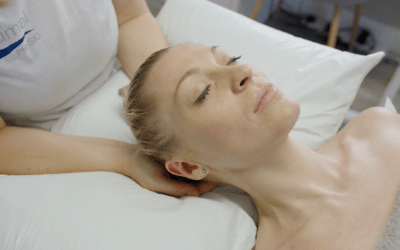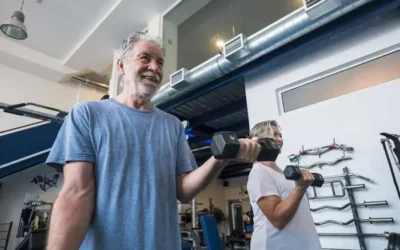The Stubborn Shoulder Impingement Syndrome

Do you get a sharp, debilitating pain in your shoulder when you are performing tasks like brushing your hair, putting on certain clothes or showering? During these movements, where you raise your arm out to the side and then upwards over your head, do you alternate between no pain and pain? For example, during the first part of the moment you don’t feel any pain, and then suddenly your shoulder “catches” and there is sharp pain, followed by no pain again as you continue to move your arm upwards.
These are all signs of a condition called Shoulder Impingement Syndrome (SIS), where the tendons of the rotator cuff muscles that stabilise your shoulder get trapped as they pass through the shoulder joint in a narrow bony space called the sub-acromial space. Impingement means to impact or encroach on bone, and repeated pinching and irritation of these tendons and the bursa (the padding under the shoulder bone) can lead to injury and pain.
Shoulder complaints are the third most common musculoskeletal problem after back and neck disorders. The highest incidence is in women and people aged 45–64 years. Of all shoulder disorders, shoulder impingement syndrome (SIS) accounts for 36%, making it the most common shoulder injury.
You shouldn’t experience impingement with normal shoulder function. When it does happen, the rotator cuff tendon becomes inflamed and swollen, a condition called rotator cuff tendonitis. Likewise, if the bursa becomes inflamed, you could develop shoulder bursitis. You can experience these conditions either on their own, or at the same time.
The injury can vary from mild tendon inflammation (tendonitis), bursitis (inflamed bursa), calcific tendonitis (bone forming within the tendon) through to partial and full thickness tendon tears, which may require surgery. Over time the tendons can thicken due to repeated irritation, perpetuating the problem as the thicker tendons battle to glide through the narrow bony sub-acromial space. The tendons can even degenerate and change in microscopic structure, with decreased circulation within the tendon resulting in a chronic tendonosis.
What Causes Shoulder Impingement?
Generally, SIS is caused by repeated, overhead movement of your arm into the “impingement zone,” causing the rotator cuff to contact the outer tip of the shoulder blade (acromion). When this repeatedly occurs, the swollen tendon is trapped and pinched under the acromion. The condition is frequently called Swimmer’s Shoulder or Thrower’s Shoulder, since the injury occurs from repetitive overhead activities. Injury could also stem from simple home chores, like hanging washing on the line or a repetitive activity at work. In other cases, it can be caused by traumatic injury, like a fall.
Shoulder impingement has primary (structural) and secondary (posture & movement related) causes:
Primary Rotator Cuff Impingement is due to a structural narrowing in the space where the tendons glide. Osteoarthritis, for example, can cause the growth of bony spurs, which narrow the space. With a smaller space, you are more likely to squash and irritate the underlying soft tissues (tendons and bursa).
Secondary Rotator Cuff Impingement is due to an instability in the shoulder girdle. This means that there is a combination of excessive joint movement, ligament laxity and muscle weakness around the shoulder joint. Poor stabilisation of the shoulder blade by the surrounding muscles changes the physical position of the bones in the shoulder, which in turn increases the risk of tendon impingement. Other causes can include weakening of the rotator cuff tendons due to overuse, for example in throwing and swimming, or muscle imbalances between the shoulder muscles.
In summary, impingement usually occurs over time due to repetitive overhead activity, trauma, previous injury, poor posture or inactivity.
When your rotator cuff fails to work normally, it is unable to prevent the head of the humerus (upper arm) from riding up into the shoulder space, causing the bursa or tendons to be squashed. Failure to properly treat this instability causes the injury to recur. Poor technique or bad training habits such as training too hard is also a common cause of overuse injuries.
Over time pain can cause further dysfunction by altering your shoulder movement patterns which may lead to a frozen shoulder. For this reason, it is vitally important that shoulder impingement syndrome is rested and treated as soon as possible to avoid longer term damage and joint deterioration.
What are the Symptoms of Shoulder Impingement?
Commonly rotator cuff impingement has the following symptoms:
- An arc of shoulder pain approximately when your arm is at shoulder height and/or when your arm is overhead
- Shoulder pain that can extend from the top of the shoulder down the arm to the elbow
- Pain when lying on the sore shoulder, night pain and disturbed sleep
- Shoulder pain at rest as your condition worsens
- Muscle weakness or pain when attempting to reach or lift
- Pain when putting your hand behind your back or head
- Pain reaching for the seat-belt, or out of the car window for a parking ticket
Who Suffers Shoulder Impingement?
Impingement syndrome is more likely to occur in people who engage in physical activities that require repeated overhead arm movements, such as tennis, golf, swimming, weight lifting, or throwing a ball. Occupations that require repeated overhead lifting or work at or above shoulder height also increase the risk of rotator cuff impingement.
How is Shoulder Impingement Diagnosed?
Shoulder impingement can be diagnosed by your physical therapist using some specific manual tests. An ultrasound scan may be useful to detect any associated injuries such as shoulder bursitis, rotator cuff tears, calcific tendonitis or shoulder tendinopathies. An x-ray can be used to see any bony spurs that may have formed and narrowed the sub-acromial space.
What does the Treatment Involve?
There are many structures that can be injured in shoulder impingement syndrome. How the impingement occurred is the most important question to answer. This is especially important if the onset was gradual, since your static and dynamic posture, muscle strength, and flexibility all have important roles to play. Your rotator cuff is an important group of muscles that control and stabilise the shoulder joint. It is essential the muscles around the thoracic spine and shoulder blade are also assessed and treated as these too work together with the entire shoulder girdle.
To effectively rehabilitate this injury and prevent recurrence, you need to work through specific stages with your therapist.
These stages may include:
- Early Injury: Protection, Pain Relief & Anti-inflammatory Treatment
- Regain Full Shoulder Range of Motion
- Restore Scapular Control and Scapulohumeral Rhythm
- Restore Normal Neck-Scapulo-Thoracic-Shoulder Function, including posture correction
- Restore Rotator Cuff Strength
- Restore High Speed, Power, Proprioception and Agility Exercises
- Return to Sport or Work
The early stages of treatment will involve manual therapy, including massage to relieve pain and release tight structures as well as mobilisation techniques to restore normal shoulder movement. Strapping/taping has been shown to be helpful in reducing pain as well as ultrasound and laser therapy. As you move through the other stages of treatment your therapist will prescribe rehabilitation exercises specific to your shoulder, posture, sport and/or work demands. Basic rehab exercises can be downloaded here
Corticosteroid injections can be useful in the initial pain relieving stage if conservative (non-surgical) methods fail to reduce the pain and inflammation. It is important to note that once your pain settles, it is important to assess your strength, flexibility, neck and thoracic spine involvement to ensure that your shoulder impingement does not return once your injection has worn off. If you have a tendon injury though an injection may actually slow your recovery in the medium to longer term.
Some shoulder impingements will respond positively and quickly to treatment; however many others can be incredibly stubborn and frustrating, taking between 3-6 months to resolve. There is no specific time frame for when to progress from each stage to the next. It is also important to note that each progression must be carefully monitored as attempting to progress too soon to the next level can lead to re-injury and frustration. For more specific advice about your shoulder impingement, contact your local physical therapist.

For our free advice leaflet and early rehab plan please download additional information at this link:
The information contained in this article is intended as general guidance and information only and should not be relied upon as a basis for planning individual medical care or as a substitute for specialist medical advice in each individual case.




0 Comments